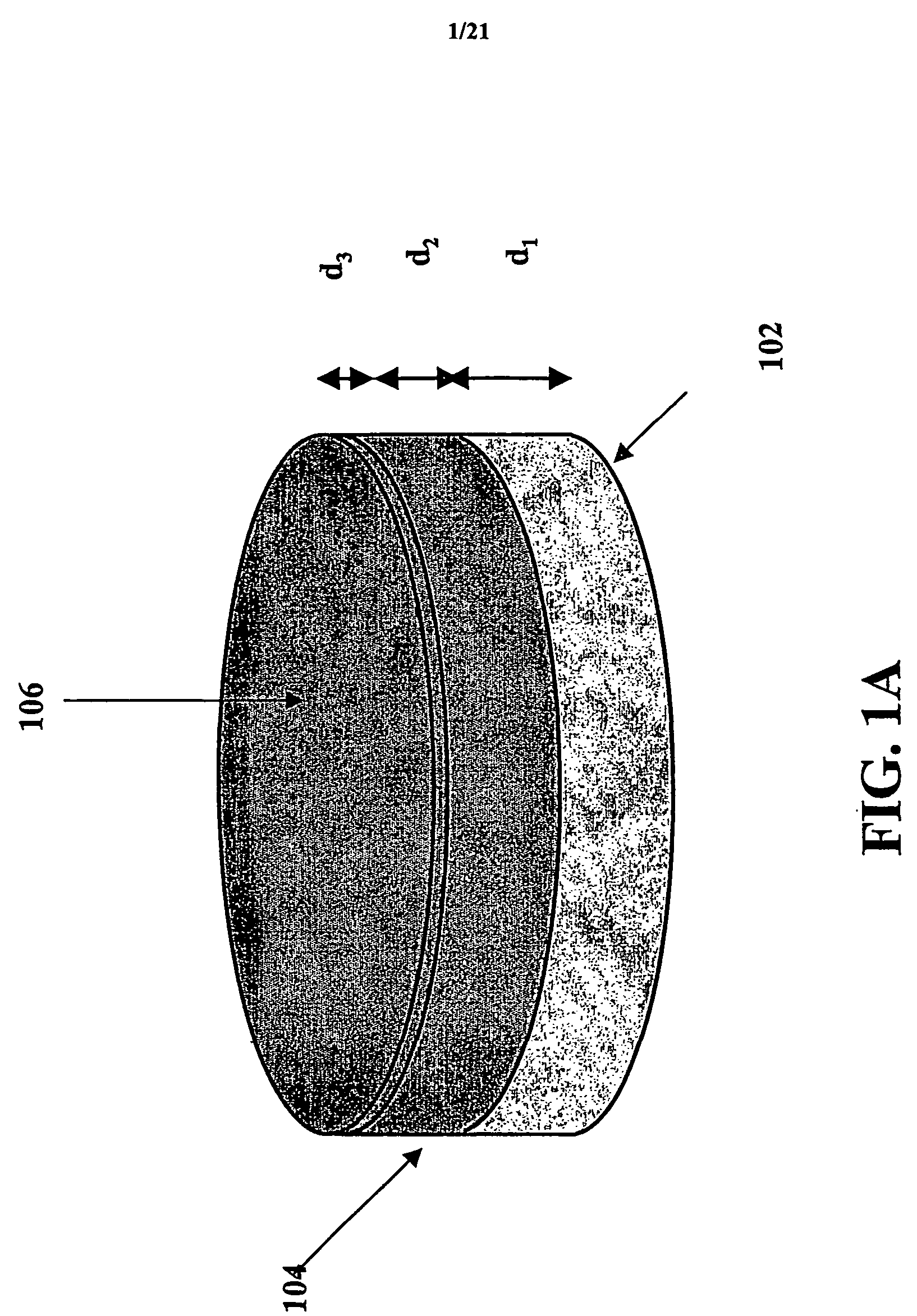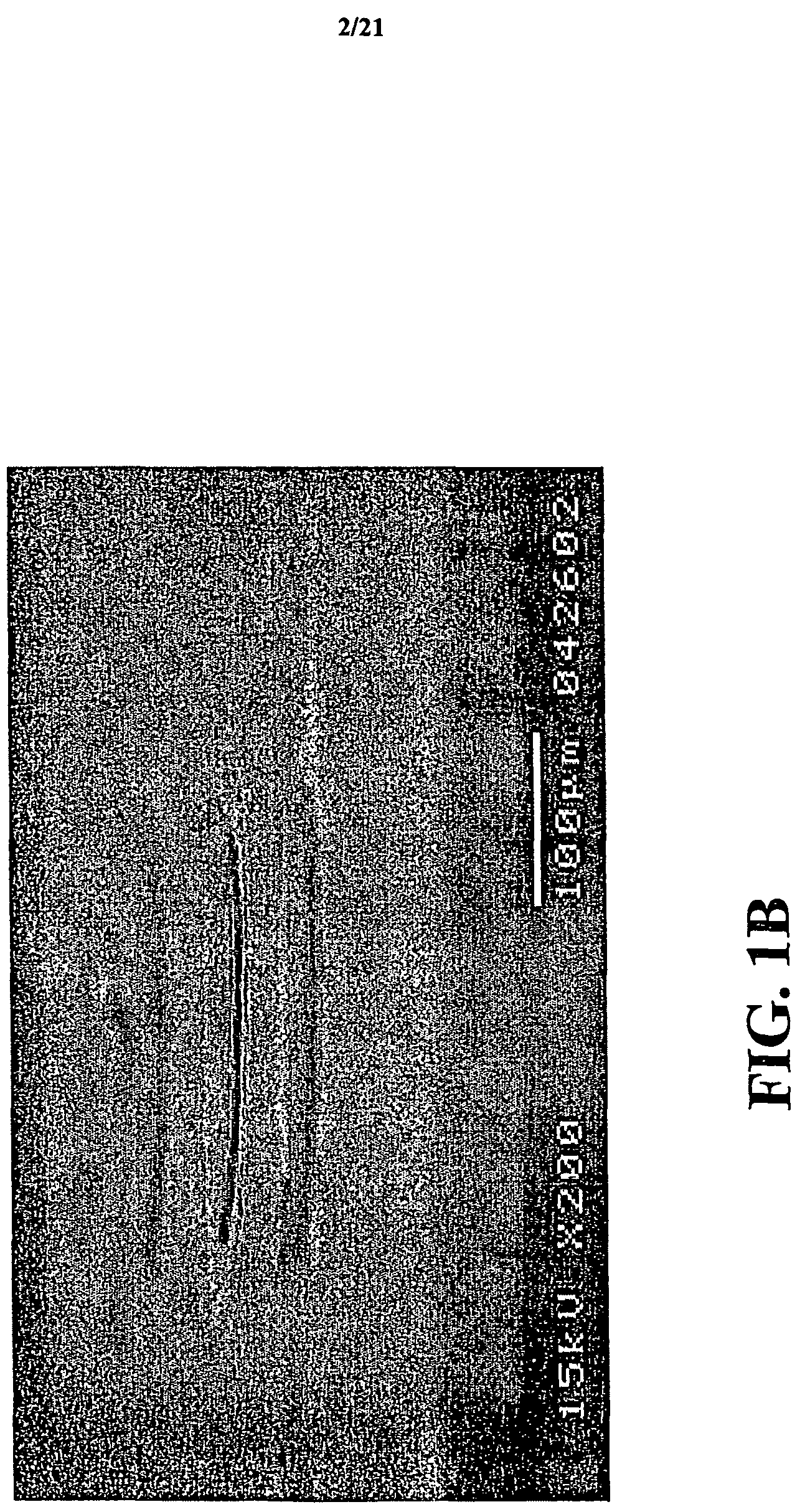Thin film optical detectors for retinal implantation and methods for making and using same
a technology of optical detectors and retinal implantation, which is applied in the field of thin film optical detectors for retinal implantation and methods for making and using same, can solve the problems of difficult surgical implantation, the detector is verifiably impossible to handle for individual implantation of such microdevices by current surgical techniques, and the difficulty of surgical implantation, so as to improve the surgical handling and improve the surgical handling characteristics
- Summary
- Abstract
- Description
- Claims
- Application Information
AI Technical Summary
Benefits of technology
Problems solved by technology
Method used
Image
Examples
example 1
[0082] This example illustrates the fabrication of an optically active thin film heterostructure of this invention.
[0083] A ceramic-based, thin film optical microdetectors of this invention is represented schematically in FIG. 1A. The microdetector 100 is composed of biologically inert materials and includes a bottom electrode layer 102, where the layer is platinum, gold, or a conducting oxide such as LaSrCoO3, RuO2, doped CeO2, or IrO2 or mixtures thereof, an optically sensitive oxide layer 104 such as La doped PbZrTiO3 (PLZT) or other optically active perovskite. It is further contemplated that other doping elements for PbZrTiO3, including Sb, Mn, and Ca, can be used. Additionally, optically active oxides or nitrides such as ZnO, BiVMgO (BVM), GaN, or BN can be used. Optionally, the optical detector 100 may optionally include a top partially transparent conducting layer 106 as top electrode, where the this conductive layer is Pt, Au, LaSrCoO3 or other conducting oxide or mixtures...
example 2
[0089] This example illustrates the fabrication of individual optical devices from heterostructure of this invention.
[0090] Individual microdetectors or arrays of microdetectors are fabricated from the resultant heterostructure using negative photoresist lithography and ion milling as is standard in the microelectronics industry. The fabrication process is shown schematically in FIG. 4. In FIG. 4, the optically active heterostructure include a conductive layer 102 and a ceramic layer 104 on a substrate 108. Next, the heterostructure is covered by a uniform layer of negative photoresist by means of a spinner and baked on at 120° C. The micro-detector array is then patterned on the photoresist by using an appropriate pattern mask, e.g., an array of 40 micron diameter dots with 80 micron spacing, and the photoresist is exposed to UV light. The photoresist is then developed revealing a pattern of 40 micron dots of photoresist left at the surface of the heterostructure. The PLZT / Pt not ...
example 3
[0091] This example illustrates attaching the polymer membrane to an optical array of this invention.
[0092] After the detector arrays are photolithographically patterned on the MgO substrate, the polymer membrane is pressed onto the microdetectors for attachment to the membrane. Wet etching of the MgO substrate is then performed to remove the micro-detector array from the substrate, but leave the polymer carrier layer intact. The wet etching for an MgO substrate is performed in a ˜20% volume concentration of HCl for a period of 24 to 48 hours at room temperature. A dry etch process may also be performed to remove the substrate. This leaves the microdetectors attached to the polymer in their proper array, and with correct orientation and lateral placement for implant into the eye. FIG. 5A shows a TOD device with an 80 micron diameter microdetector and 160 micron spacing mounted on a PLGA polymer film used as a carrier and FIG. 5B shows a TOD device with a 200 micron square microdete...
PUM
 Login to View More
Login to View More Abstract
Description
Claims
Application Information
 Login to View More
Login to View More - R&D
- Intellectual Property
- Life Sciences
- Materials
- Tech Scout
- Unparalleled Data Quality
- Higher Quality Content
- 60% Fewer Hallucinations
Browse by: Latest US Patents, China's latest patents, Technical Efficacy Thesaurus, Application Domain, Technology Topic, Popular Technical Reports.
© 2025 PatSnap. All rights reserved.Legal|Privacy policy|Modern Slavery Act Transparency Statement|Sitemap|About US| Contact US: help@patsnap.com



